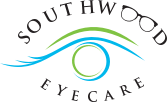Glaucoma is sometimes called the “silent thief of sight” because of the condition’s ability to cause irreversible vision loss before showing any significant symptoms. Glaucoma is the leading cause of blindness nationwide, impacting an estimated 800,000 Canadians, half of whom don’t even know they have it.
In most cases, glaucoma progresses slowly and does not present any symptoms in its earliest, most treatable stages. The first signs of glaucoma can almost always only be detected through a comprehensive eye exam.
What Is Glaucoma?
Glaucoma is a group of eye conditions that can damage your optic nerve, leading to permanent vision loss and even blindness, if left untreated.
There are a number of forms of glaucoma, including:
- Primary open-angle glaucoma
- Acute angle-closure glaucoma
- Secondary glaucoma
Primary Open-Angle Glaucoma
The most common type of glaucoma is open-angle. Open-angle glaucoma accounts for 90% of all glaucoma cases in Canada and occurs due to increased fluid pressure inside the eye. This type of glaucoma progresses slowly, usually over years, and does not show any symptoms until irreversible vision loss has already occurred.
Acute Angle-Closure Glaucoma
Acute angle-closure glaucoma is a less common but potentially serious form of glaucoma. It occurs when the angle between the cornea (the clear surface of your eye) and the iris (the coloured part of your eye) becomes too narrow, causing fluid to rapidly build up in your eye.
Unlike other forms of glaucoma, acute angle-closure glaucoma occurs suddenly and can cause severe eye pain. Acute angle-closure glaucoma should be treated as a medical emergency and requires immediate medical intervention to prevent rapid vision loss.
Secondary Glaucoma
Secondary glaucoma occurs due to an underlying eye condition, injury, or other medical condition. Unlike open-angle glaucoma, which typically develops without a clear cause, secondary glaucoma can most often be linked to a specific trigger or health condition.
Early Signs & Symptoms of Glaucoma
Most forms of glaucoma, including open-angle glaucoma, advance without symptoms and can only be detected through an eye exam.
If left untreated, the first noticeable sign of glaucoma will most often be a loss of peripheral vision. Those with glaucoma may find their peripheral vision is initially blurry, and as the condition worsens, they may develop tunnel vision.

Depending on the type of glaucoma, additional symptoms can include:
- Blurred vision
- Eye redness
- Eye pain
- Sensitivity to light
- Halos around lights
- Nausea & vomiting
- Headaches
- Rapid vision loss
Glaucoma Detection & Treatment
Early detection and treatment are essential to managing glaucoma and preventing permanent vision loss. Because the condition has few symptoms, it can only be detected through a comprehensive eye exam in its earliest, most treatable stages.
During an eye exam, your eye doctor will conduct several tests that can help detect glaucoma, which may include:
- Tonometry: This test measures your intraocular pressure (IOP) to assess if it is within the normal range. A higher-than-normal IOP can be a key indicator of glaucoma. Tonometry can be done using various techniques, including the “air puff” method, where a gentle puff of air is directed onto your eye, or by using an instrument called a tonometer that touches the surface of your eye.
- Optic nerve examination: During an eye exam, your eye doctor will examine your optic nerve for any signs of damage or abnormalities which may indicate glaucoma. Depending on your eye doctor, this may be done through a dilated eye exam or digital imaging technology.
- Visual field test: This test evaluates the full extent of your peripheral vision. It can help detect any vision loss or abnormalities caused by glaucoma. During the test, you will be asked to focus on a fixed point while indicating when you see flashing lights or other objects in your peripheral vision.
- Family history & risk assessment: In addition to the above tests, your eye doctor will inquire about your family history of glaucoma and other risk factors, such as age, medical history, and ethnic background, which can contribute to your likelihood of developing glaucoma.
While there is no cure for glaucoma, several treatment options can effectively manage the condition and prevent permanent vision loss. Common glaucoma treatment options include medication, laser therapy, and in some cases, surgery. Glaucoma treatment aims to manage elevated eye pressure to prevent the condition from progressing.
Start with an Eye Exam
Routine eye exams can provide valuable insight into your eye and overall health. That may include detecting the first signs of glaucoma. If it has been over a year or two since your last eye exam, you are likely due for another visit with your eye doctor. At Southwood Eyecare, we are here for all your eye care needs, including routine eye exams and glaucoma management. Contact our office to book your appointment.




